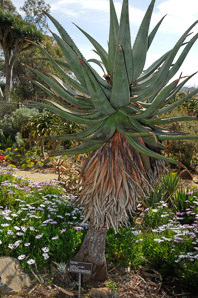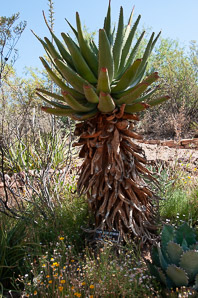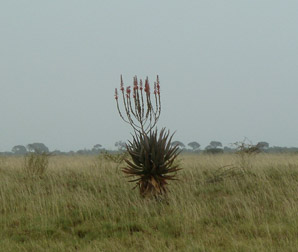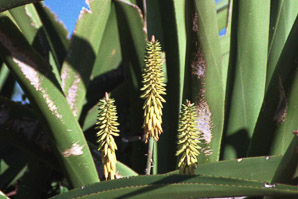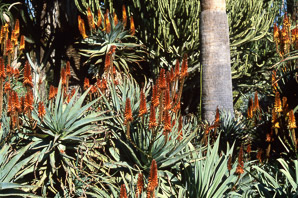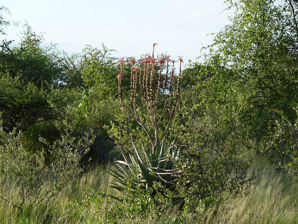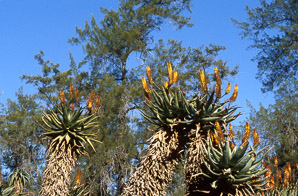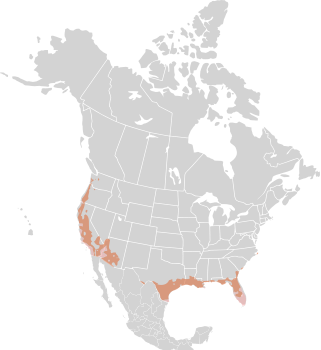
|
Aloe ferox Mill. Bitter aloe, red aloe, cape aloe
The name of this species, ferox, refers to the "ferociousness" of the fiery flowers and the sharp, unforgiving leaves. It is native to South Africa, and not found in the wild in North America. Identification: Plants are treelike in shape, with a stem clothed in dead aloe leaves, and reach 10′ (3 m) in height. The leaves are bluish-green, with leaf tips sometimes appearing red in very dry weather. Leaves are serrated and crescent-shaped in cross section, forming a rosette atop a trunk. Flowers form tall yellow to orange-red spikes 2-4′ (60-121 cm) above the leaf cluster. There are five to ten flower stalks per aloe. See the Aloe comparison table. Medical: Unsubstantiated health claims abound for this plant. The only substantiated one that I could find was that it compared reasonably well with senna-based preparations as a laxative. As an example of the dubious claims about Aloe ferox: "Over 130 biological active compounds of the aloe ferox have so far been reported. The Aloe ferox leaf contains substances such as amino acids, minerals, vitamins, polysaccharides, glycoproteins, anthraquinones, enzymes, lignin, chlorophyll, saponins, sterols and other plant chemicals with numerous medicinal activities."[1] Sounds impressive, right? At least until you consider the fact that every single one of these substances is part of all plants! These are among the more common of the roughly 30,000 compounds that are found in a typical plant. (If you're a professional botanist with a tendency to nitpick, you may be thinking 'Wait! Anthraquinone! That's not in every plant.' True, though it is hard to see how a substance that is used as a building block in the creation of certain artificial dyes would make you healthier.) Online References:
The South African National Biodiversity Institute's web site, plantzafrica.com ARKive: Images of Life on Earth 2/24/2010 · San Diego (Quail) Botanic Garden, Encinitas, California This is a hybrid. · 5/25/2009 · Boyce Thompson Arboretum, Superior, Arizona · ≈ 3 × 4½′ (97 × 146 cm) 1From a web site that markets Aloe ferox.
Aloe ferox description by Thomas H. Kent, last updated 25 May 2020. © FloraFinder.org. All rights reserved. |
7/29/2023 · South Africa · By Benjamin Winslow 7/4/1998 · Antigua 4/11/1979 · Huntington Library Cactus Garden, San Marino, California 7/29/2023 · South Africa · By Benjamin Winslow 4/11/1979 · Huntington Library Cactus Garden, San Marino, California Range: Zones 9-11:
|
